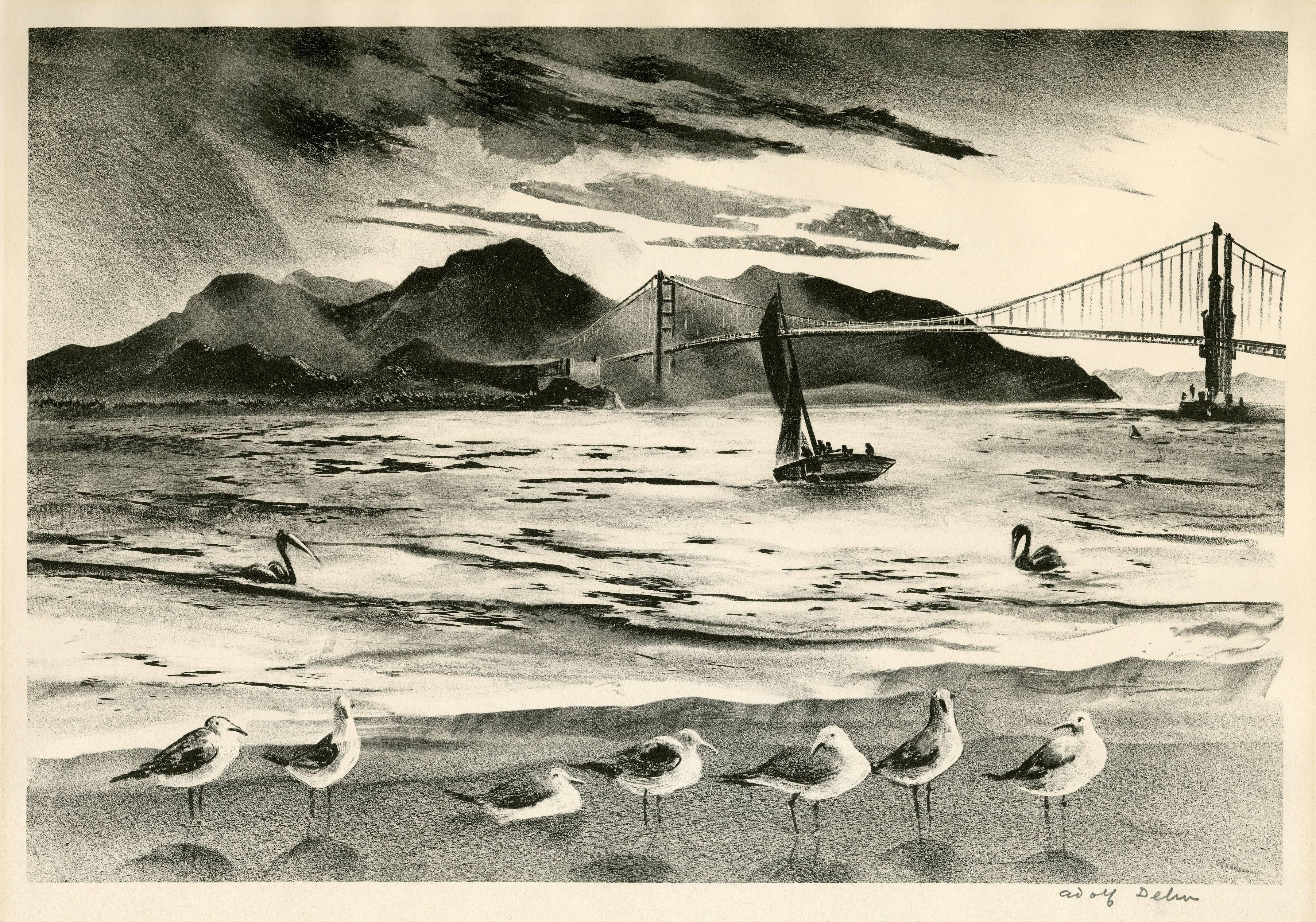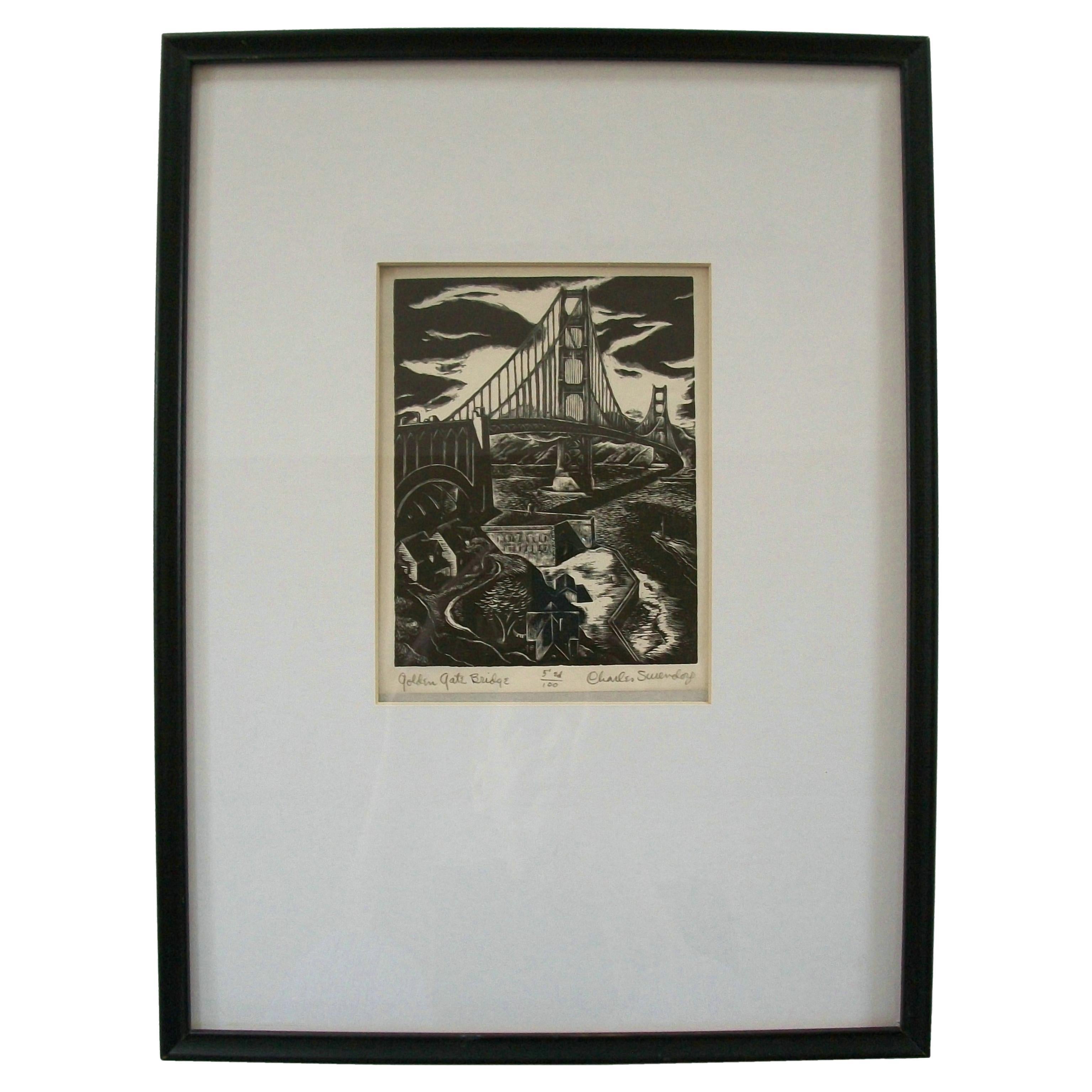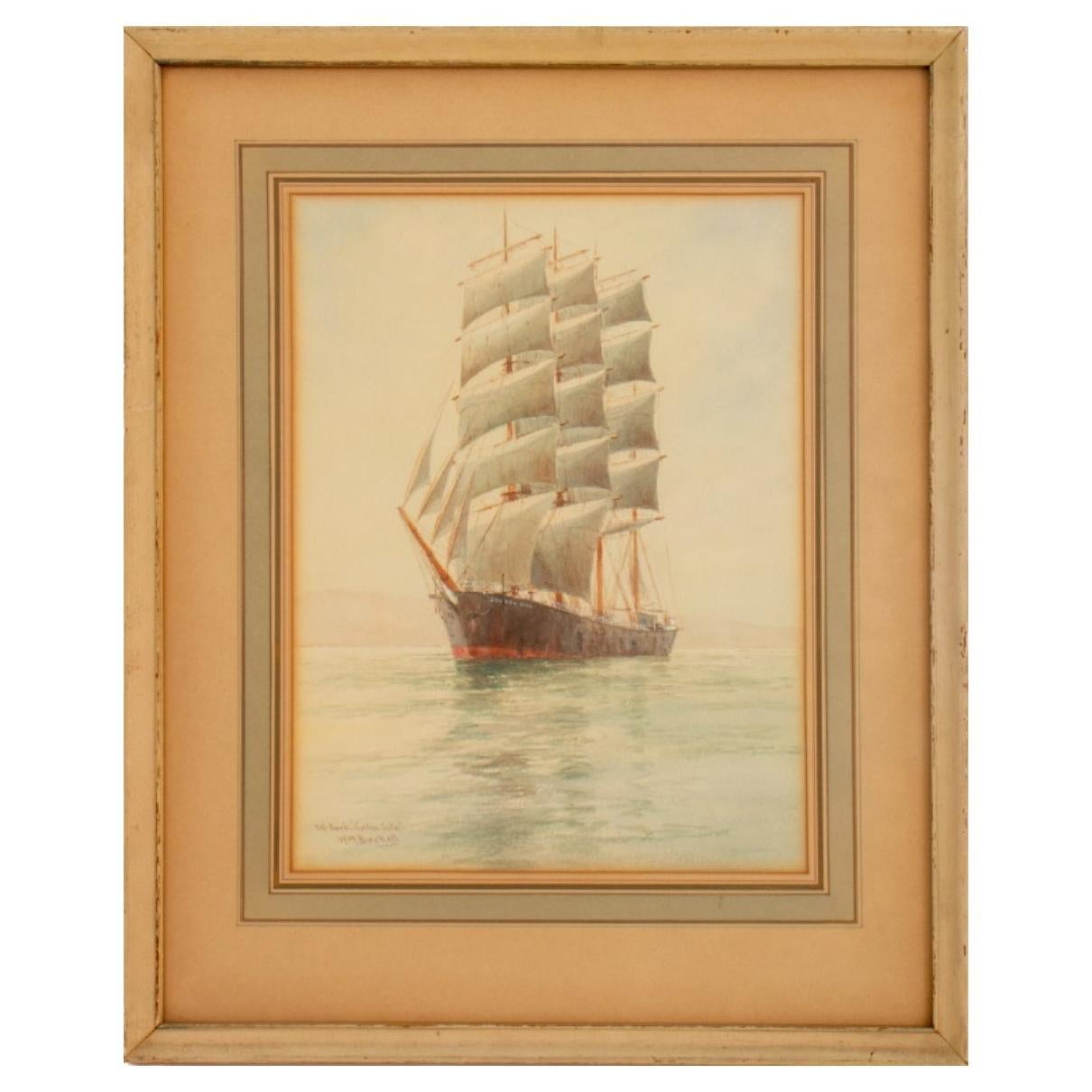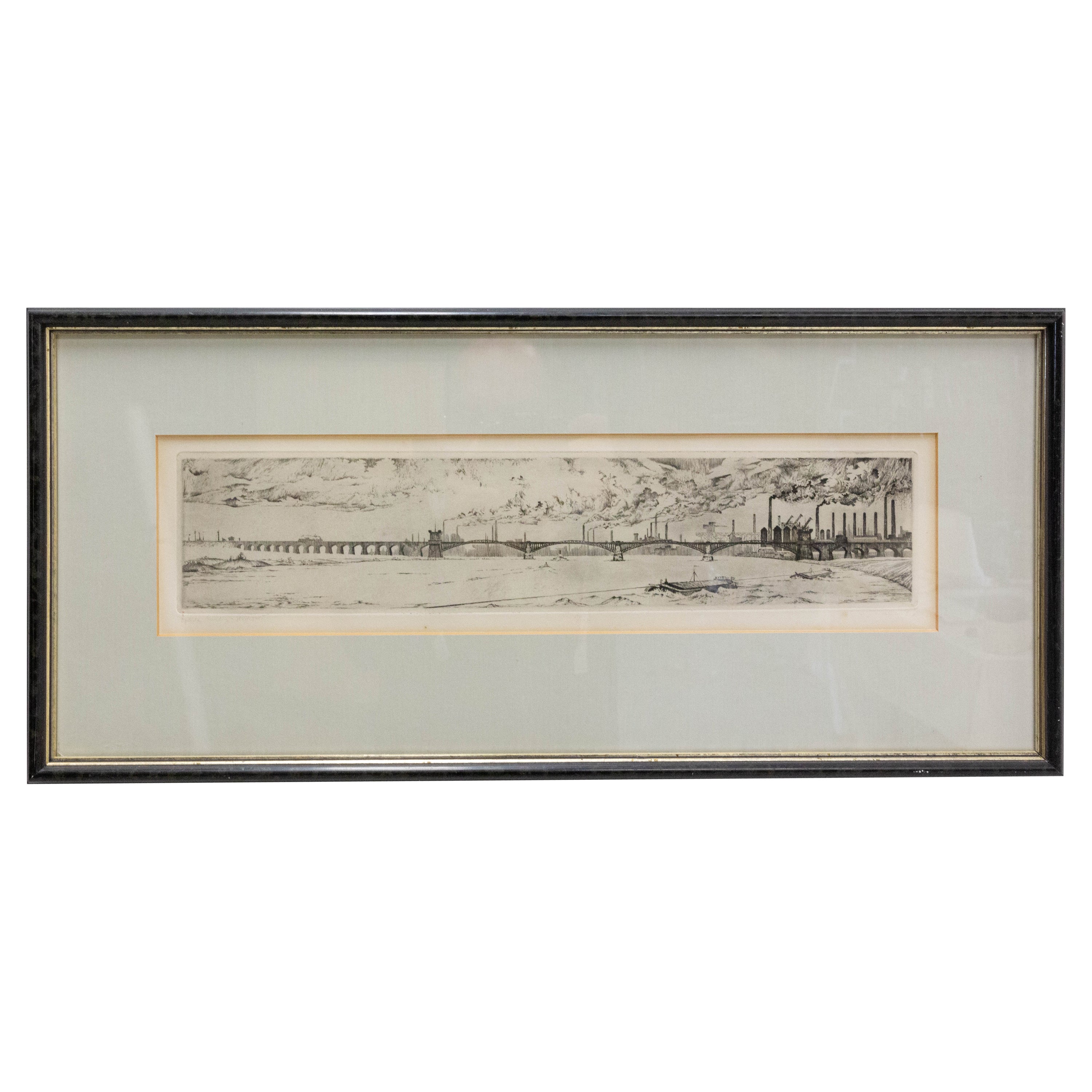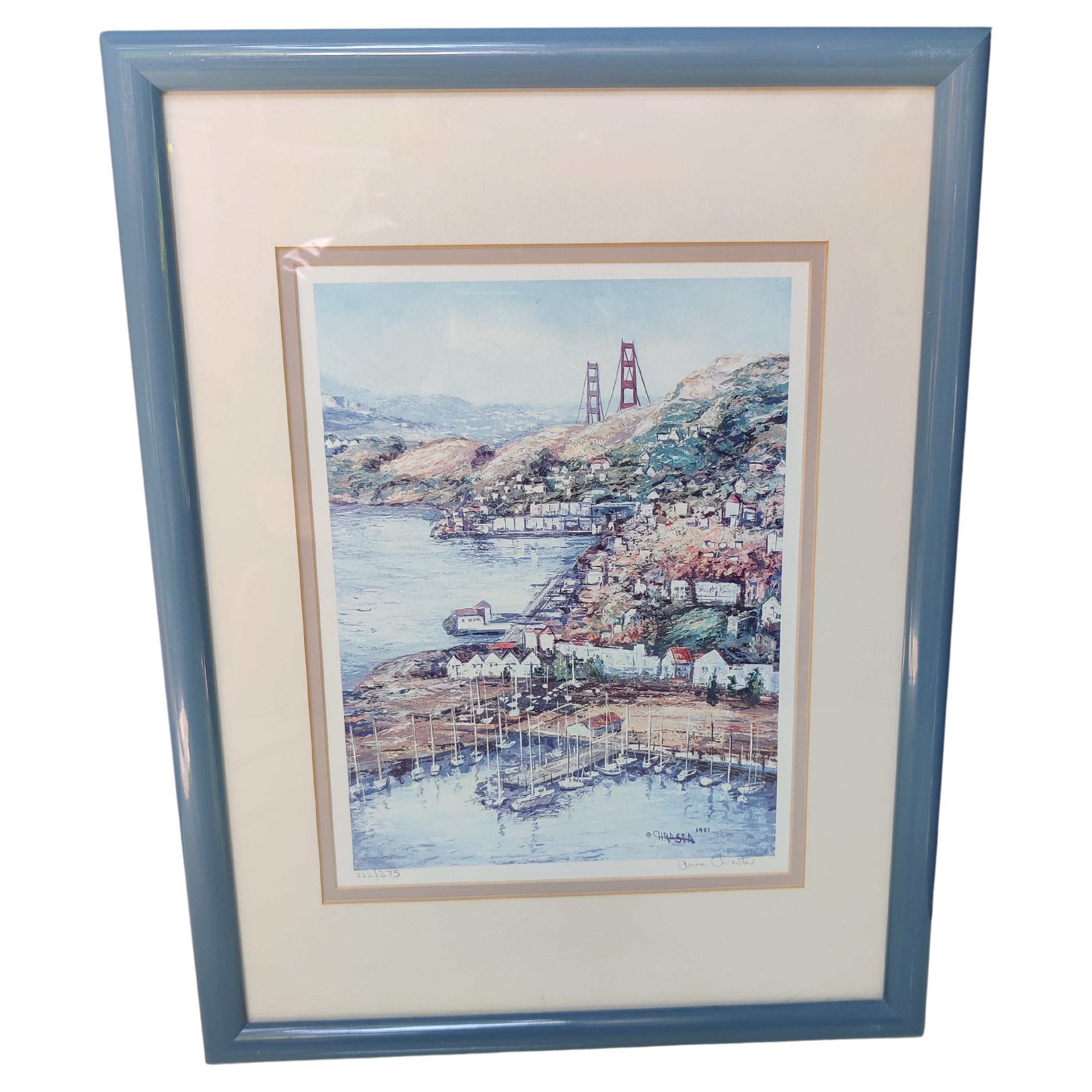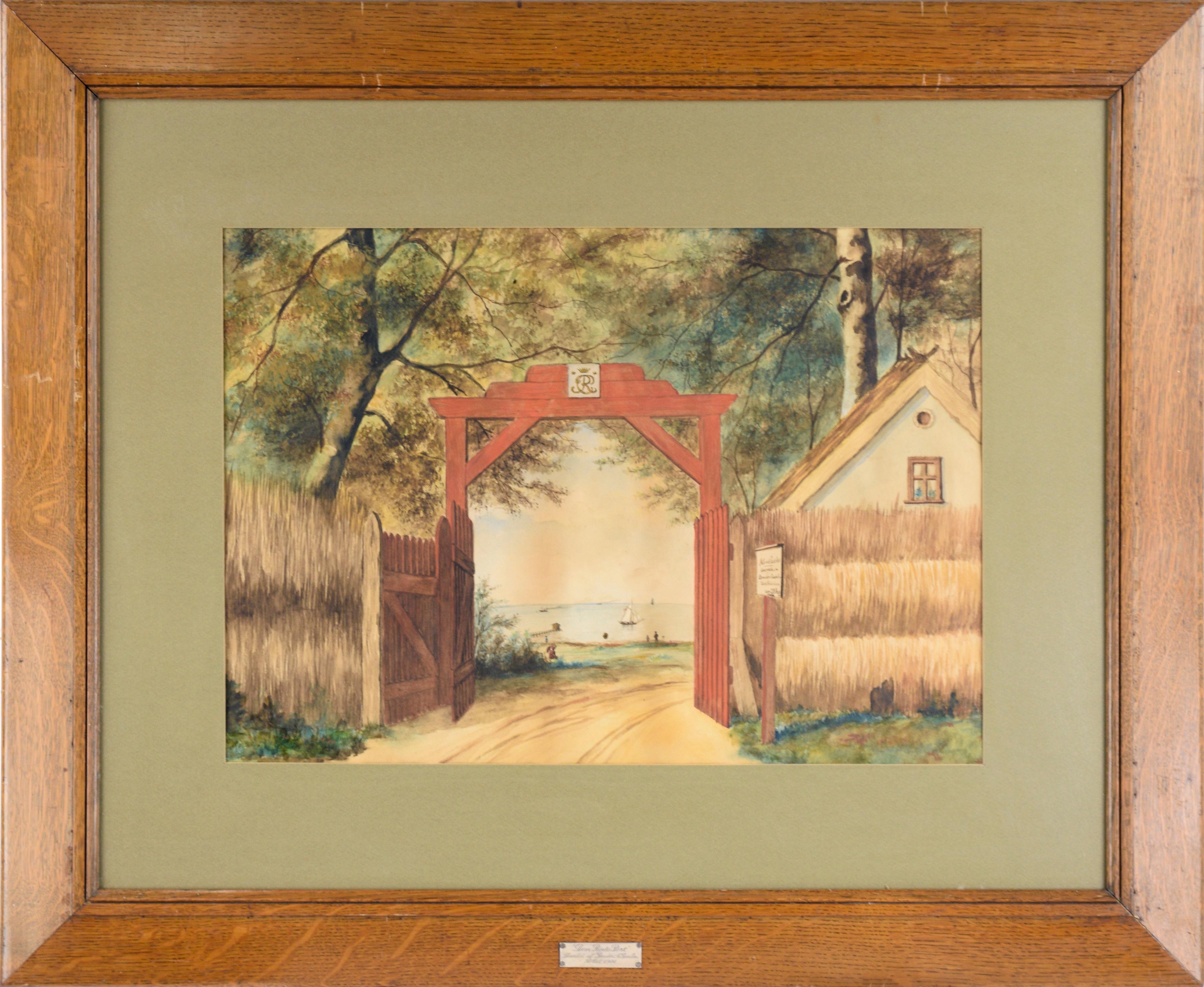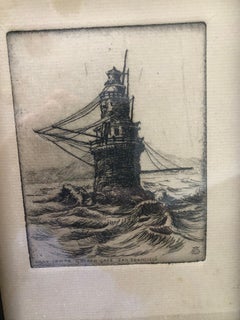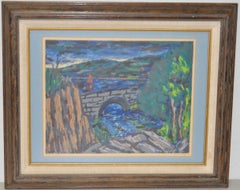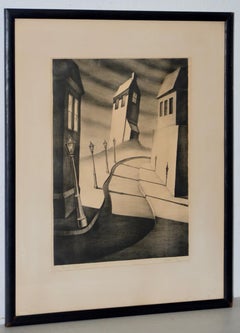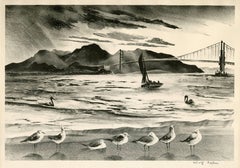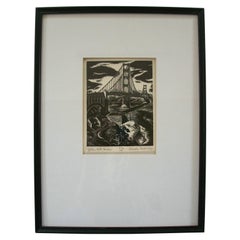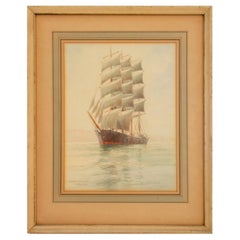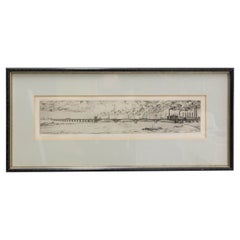Items Similar to Adolph Dehn "Golden Gate" Lithograph c.1940
Want more images or videos?
Request additional images or videos from the seller
1 of 13
Adolph Arthur DehnAdolph Dehn "Golden Gate" Lithograph c.1940Circa 1940
Circa 1940
$950
£704.94
€821.15
CA$1,322.41
A$1,472.62
CHF 766.42
MX$18,157.22
NOK 9,760.91
SEK 9,174.31
DKK 6,126.83
Shipping
Retrieving quote...The 1stDibs Promise:
Authenticity Guarantee,
Money-Back Guarantee,
24-Hour Cancellation
About the Item
Adolph Dehn "Golden Gate" Lithograph c.1940
Fine pencil signed lithograph issued by Associated American Artists, New York
Edition size 200.
Dimensions 13 1/2" x 9". The frame measures 20 3/4" x 16 3/4".
Good vintage condition.
Adolf Dehn was an American lithographer. Throughout his artistic career, Dehn participated in and helped define some important movements in American art, including Regionalism, Social Realism, and caricature.
- Creator:Adolph Arthur Dehn (1895 - 1968)
- Creation Year:Circa 1940
- Dimensions:Height: 16.75 in (42.55 cm)Width: 20.75 in (52.71 cm)Depth: 2 in (5.08 cm)
- Medium:
- Movement & Style:
- Period:
- Condition:
- Gallery Location:San Francisco, CA
- Reference Number:1stDibs: LU137826292692
About the Seller
4.9
Vetted Professional Seller
Every seller passes strict standards for authenticity and reliability
1stDibs seller since 2020
524 sales on 1stDibs
Typical response time: 6 hours
- ShippingRetrieving quote...Shipping from: San Francisco, CA
- Return Policy
Authenticity Guarantee
In the unlikely event there’s an issue with an item’s authenticity, contact us within 1 year for a full refund. DetailsMoney-Back Guarantee
If your item is not as described, is damaged in transit, or does not arrive, contact us within 7 days for a full refund. Details24-Hour Cancellation
You have a 24-hour grace period in which to reconsider your purchase, with no questions asked.Vetted Professional Sellers
Our world-class sellers must adhere to strict standards for service and quality, maintaining the integrity of our listings.Price-Match Guarantee
If you find that a seller listed the same item for a lower price elsewhere, we’ll match it.Trusted Global Delivery
Our best-in-class carrier network provides specialized shipping options worldwide, including custom delivery.More From This Seller
View AllLight Tower Golden Gate San Francisco Etching
Located in San Francisco, CA
Mystery monogrammed early San Francisco etching. Great little piece of San Francisco history showing a lighthouse in Golden Gate. Etching measure...
Category
Early 20th Century American Realist Landscape Prints
Materials
Etching
Harry Shoulberg "The Bridge" Serigraph c.1944
By Harry Shoulberg
Located in San Francisco, CA
Harry Shoulberg (1903-1995)
Expressionist mid modern serigraph "The Bridge" c.1944
Pencil signed and titled by the artist.
This fine serigraph retains all of it's vibrant color after 76 years!
Dimensions 12" x 15". Frame dimensions 23" x 19". Very good condition.
Please note: The linen rabbet lining of the frame does show some discoloration.
This is a rare and exceptional work by Shoulberg. His serigraphs can be found in the permanent collections of some of the finest museums, and institutions in the country.
Harry Shoulberg was born in Philadelphia, 25 October 1903 of Russian/Jewish heritage. His father, Max Shoulberg, was the fourth of twenty children and the first to be born in America. His mother was Tessie Derfler, a New Yorker of German descent. Harry grew-up in New York, married Sylvia Hendler in 1931, and had one child, Ted.
Shoulberg attended City College of New York where he studied biochemical engineering for three years before switching to fine arts in his last year. He continued his art education at the John Reed School, 1934-1935, the American Artist School, 1935-1937, and then privately at the studios of artists Sol Wilson (1894-1974) and Carl Holty (1900-1973). In 1938, he worked for the WPA and produced two oil paintings for the organization.
He maintained studios in New York City and Bridgehampton on Long Island until 1983. He was a late bloomer...
Category
Early 20th Century Impressionist Landscape Prints
Materials
Screen
Betty Guy San Francisco Skyline Watercolor c.1950
By Betty Guy
Located in San Francisco, CA
Betty Guy San Francisco Skyline Watercolor c.1950
Dimensions 25" wide x 18" high.
Frame 25.5" wide x 28.5" high.
Signed by the artist.
Lightly distressed...
Category
Mid-20th Century Impressionist Landscape Drawings and Watercolors
Materials
Paper, Watercolor
Alfred Gray "Silent Street" Signed Lithograph c.1930s
Located in San Francisco, CA
Alfred Gray "Silent Street" Signed Lithograph c.1930s
Rare lithograph by noted artist Alfred Gray.
A surreal street bathed in shadow and light.
Dimensions 15" x 21". The original ...
Category
Early 20th Century Art Deco Landscape Prints
Materials
Lithograph
James Sanford Hulme "Army Plaza" Original Signed Etching c.1930
Located in San Francisco, CA
James Sanford Hulme "Army Plaza" Original Signed Etching c.1930
Plate dimensions 6" wide x 4" high
The distressed period frame measures 10.75" wi...
Category
Early 20th Century Impressionist Landscape Prints
Materials
Etching
John Winkler (California, 1890-1979) "Night in Chinatown" Original Etching
Located in San Francisco, CA
John Winkler (California, 1890-1979) "Night in Chinatown" Original Etching c.1936
Also known as "Figures by a Street Lamp." Winkler worked as a gas lamp lighter early in his student...
Category
1930s More Prints
Materials
Etching
You May Also Like
The Golden Gate
By Adolf Arthur Dehn
Located in Fairlawn, OH
The Golden Gate
Lithograph on wove paper watermarked GC, 1940
Signed in pencil by the artist (see photo)
Publisher: Associated American Artists
Edition: 189, unnumbered
The image depicts The Golden Gate Bridge which connects San Francisco and Marin County, California
References And Exhibitions:
Illustrated: Adams, The Sensuous Life of Adolf Dehn, Fig. 13.17, page 324
Reference: L & O 325
AAA Index 391
Adolf Dehn, American Watercolorist and Printmaker, 1895-1968
Adolf Dehn was an artist who achieved extraordinary artistic heights, but in a very particular artistic sphere—not so much in oil painting as in watercolor and lithography. Long recognized as a master by serious print collectors, he is gradually gaining recognition as a notable and influential figure in the overall history of American art.
In the 19th century, with the invention of the rotary press, which made possible enormous print runs, and the development of the popular, mass-market magazines, newspaper and magazine illustration developed into an artistic realm of its own, often surprisingly divorced from the world of museums and art exhibitions, and today remains surprisingly overlooked by most art historians. Dehn in many regards was an outgrowth of this world, although in an unusual way, since as a young man he produced most of his illustrative work not for popular magazines, such as The Saturday Evening Post, but rather for radical journals, such as The Masses or The Liberator, or artistic “little magazines” such as The Dial. This background established the foundation of his outlook, and led later to his unique and distinctive contribution to American graphic art.
If there’s a distinctive quality to his work, it was his skill in introducing unusual tonal and textural effects into his work, particularly in printmaking but also in watercolor. Jackson Pollock seems to have been one of many notable artists who were influenced by his techniques.
Early Years, 1895-1922
For an artist largely remembered for scenes of Vienna and Paris, Adolf Dehn’s background was a surprising one. Born in Waterville, Minnesota, on November 22, 1895, Dehn was the descendent of farmers who had emigrated from Germany and homesteaded in the region, initially in a one-room log cabin with a dirt floor. Adolf’s father, Arthur Clark Dehn, was a hunter and trapper who took pride that he had no boss but himself, and who had little use for art. Indeed, during Adolf’s boyhood the walls of his bedroom and the space under his bed were filled with the pelts of mink, muskrats and skunks that his father had killed, skinned and stretched on drying boards. It was Adolf’s mother, Emilie Haas Dehn, a faithful member of the German Lutheran Evangelical Church, who encouraged his interest in art, which became apparent early in childhood. Both parents were ardent socialists, and supporters of Eugene Debs. In many ways Dehn’s later artistic achievement was clearly a reaction against the grinding rural poverty of his childhood.
After graduating from high school in 1914 at the age of 19—an age not unusual in farming communities at the time, where school attendance was often irregular—Dehn attended the Minneapolis School of Art from 1914 to 1917, whose character followed strongly reflected that of its director, Munich-trained Robert Kohler, an artistic conservative but a social radical. There Dehn joined a group of students who went on to nationally significant careers, including Wanda Gag (later author of best-selling children’s books); John Flanagan (a sculptor notable for his use of direct carving) Harry Gottlieb (a notable social realist and member of the Woodstock Art Colony), Elizabeth Olds (a printmaker and administrator for the WPA), Arnold Blanch (landscape, still-life and figure painter, and member of the Woodstock group), Lucille Lunquist, later Lucille Blanch (also a gifted painter and founder of the Woodstock art colony), and Johan Egilrud (who stayed in Minneapolis and became a journalist and poet).
Adolf became particularly close to Wanda Gag (1893-1946), with whom he established an intense but platonic relationship. Two years older than he, Gag was the daughter of a Bohemian artist and decorator, Anton Gag, who had died in 1908. After her husband died, Wanda’s mother, Lizzi Gag, became a helpless invalid, so Wanda was entrusted with the task of raising and financially supporting her six younger siblings. This endowed her with toughness and an independent streak, but nonetheless, when she met Dehn, Wanda was Victorian and conventional in her artistic taste and social values. Dehn was more socially radical, and introduced her to radical ideas about politics and free love, as well as to socialist publications such as The Masses and The Appeal to Reason.
Never very interested in oil painting, in Minneapolis Dehn focused on caricature and illustration--often of a humorous or politically radical character. In 1917 both Dehn and Wanda won scholarships to attend the Art Students League, and consequently, in the fall of that year both moved to New York. Dehn’s art education, however, ended in the summer of 1918, shortly after the United States entered World War I, when he was drafted to serve in the U. S. Army. Unwilling to fight, he applied for status as a conscientious objector, but was first imprisoned, then segregated in semi-imprisonment with other Pacifists, until the war ended. The abuse he suffered at this time may well explain his later withdrawal from taking political stands or making art of an overtly political nature. After his release from the army, Dehn returned to New York where he fell under the spell of the radical cartoonist Boardman Robinson and produced his first lithographs. He also finally consummated his sexual relationship with Wanda Gag.
The Years in Europe: 1922-1929
In September of 1921, however, he abruptly departed for Europe, arriving in Paris and then moving on to Vienna. There in the winter of 1922 he fell in love with a Russian dancer, Mura Zipperovitch, ending his seven-year relationship with Wanda Gag. He and Mura were married in 1926. It was also in Vienna that he produced his first notable artistic work.
Influenced by European artists such as Jules Pascin and Georg Grosz, Dehn began producing drawings of people in cafes, streets, and parks, which while mostly executed in his studio, were based on spontaneous life studies and have an expressive, sometimes almost childishly wandering quality of line. The mixture of sophistication and naiveté in these drawings was new to American audiences, as was the raciness of their subject matter, which often featured pleasure-seekers, prostitutes or scenes of sexual dalliance, presented with a strong element of caricature. Some of these drawings contain an element of social criticism, reminiscent of that found in the work of George Grosz, although Dehn’s work tended to focus on humorous commentary rather than savagely attacking his subjects or making a partisan political statement. Many Americans, including some who had originally been supporters of Dehn such as Boardman Robinson, were shocked by these European drawings, although George Grocz (who became a friend of the artist in this period) admired them, and recognized that Dehn could also bring a new vision to America subject matter. As he told Dehn: “You will do things in America which haven’t been done, which need to be done, which only you can do—as far at least as I know America.”
A key factor in Dehn’s artistic evolution at this time was his association with Scofield Thayer...
Category
1940s American Realist Landscape Prints
Materials
Lithograph
CHARLES SURENDORF - 'Golden Gate Bridge' - Woodblock Print - U.S. - Circa 1930's
Located in Chatham, ON
CHARLES FREDERICK SURENDORF (American, 1906-1979) - 'Golden Gate Bridge' - Mid Century woodblock print - finished with a an ebonized softwood fra...
Category
Early 20th Century American Mid-Century Modern Prints
Materials
Paint, Paper
$700 Sale Price
30% Off
William Minshall Birchall "Golden Gate" Watercolor
Located in Astoria, NY
William Minshall Birchall (American, 1884-1941) "US Bark Golden Gate" marine watercolor on paper, signed and titled to lower left, housed in a white painted frame.
Dimensions: Ima...
Category
Early 20th Century American Classical Paintings
Materials
Wood, Paint, Paper
Engraving Industrial Landscape Railway Bridge, Germany, Late 19th Century
Located in Labrit, Landes
Industrial Landscape engraving representing the banks of the Ruhr and Essen
late 19th century, Germany
Good condition
Shipping:
wooden case 64 8 33 cm Kg 4.
Category
Antique Late 19th Century Prints
Materials
Paper
Anna Chrasta San Francisco Scene Bay & Golden Gate Bridge Signed and Numbered
Located in Cincinnati, OH
Anna Chrasta San Francisco Scene Bay & Golden Gate Bridge Lithograph Signed and Numbered 222/375
Double Mat, Blue Frame
Image 10.5 x 7.5
Category
Mid-20th Century American Prints
Materials
Paper
$756 Sale Price
20% Off
Golden Gate Park "Den Rode Port" - Landscape
Located in Soquel, CA
Serene watercolor of Den Rode Port (The Red Gate) Overlooking the San Francisco Bay from the Golf Gourse by Alfred J. Garlin (Danish, 1866-1929). Artist's signature is integrated into the piece. Title and artist info on a plaque mounted to wood frame. Frame includes UV-resistant plexiglas. Image size: 18"H x25"W
Alfred J. Garlin was a watercolorist born in Denmark in 1866. By 1910 Garlin had settled in San Francisco. An electrician, in his leisure he painted scenes of the Monterey Peninsula, Feather River Canyon, and Mount Tamalpais...
Category
Early 1900s Impressionist Landscape Drawings and Watercolors
Materials
Paper, Watercolor
$1,720 Sale Price
20% Off
